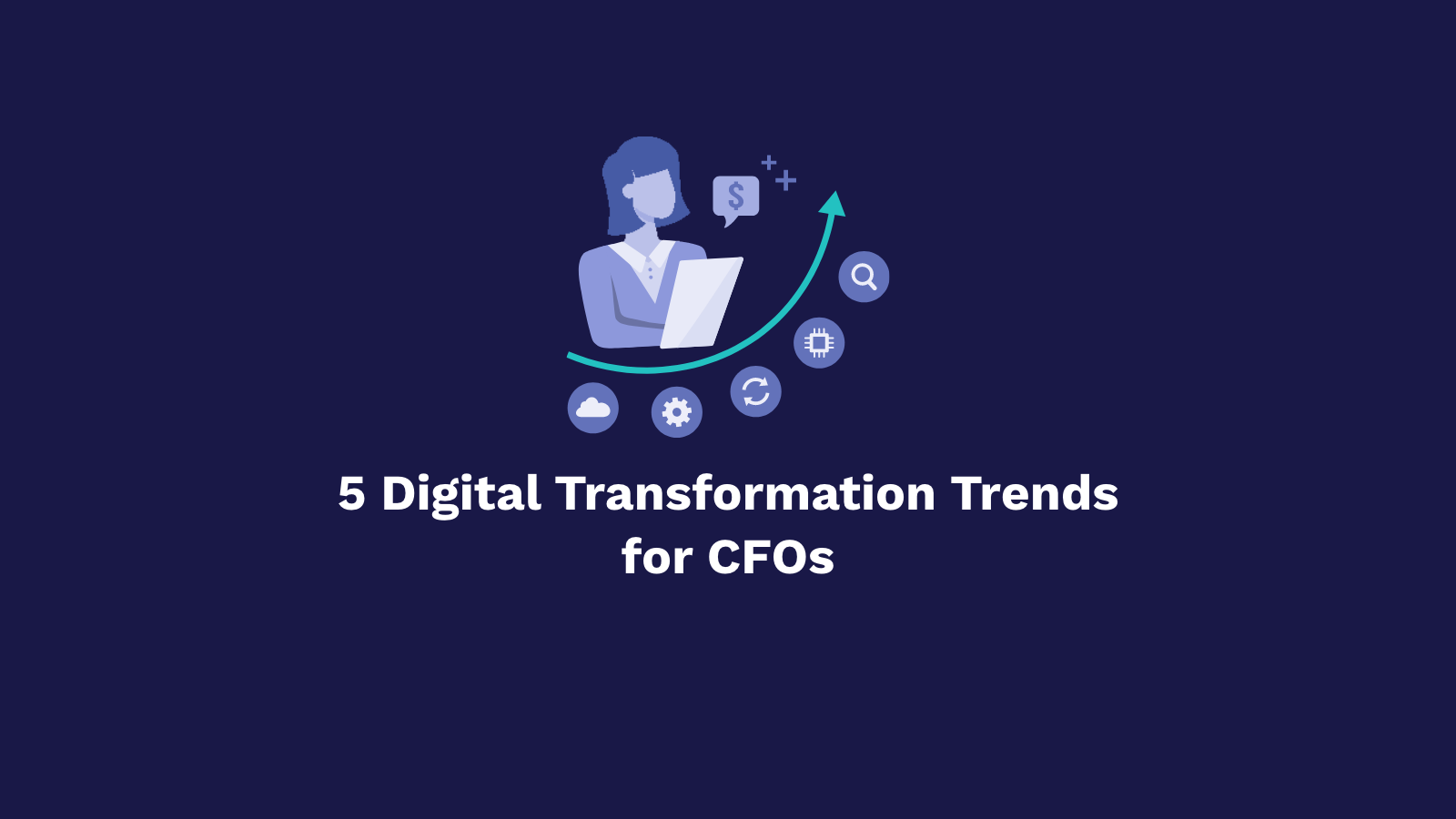
5 Digital Transformation Trends for CFOs
More CFOs are overseeing their company’s tech transition. Here are some things to keep in mind.
Around the world, thousands of companies are undergoing their own digital transformations. The ones who haven’t will likely undertake that process sooner rather than later. Historically, it’s a chief technology officer or a firm’s IT department that oversees this process, which involves everything from adopting cloud technology to implementing artificial intelligence. Over the last few years, however, a greater number of CFOs have taken the lead on these transformations.
It makes sense that CFOs are getting involved on a deeper, more strategic level. Transformations not only cost money, but when deployed well, they can help make a company more money – all things CFOs care deeply about. However, making your business more digital is not a simple task, especially for CFOs who may be more used to number crunching than business strategy.
We’ve put together a list of transformation trends to help CFOs better understand the key tasks they’ll need to tackle as they transition into a more digital future.
Cloud computing, where files and programs are stored on virtual servers instead of in a warehouse owned by the company, is essential to digital transformation. It’s not a new concept, but many companies still haven’t moved their processes and programs – and especially their finance functions – into a cloud-based environment. The CFO is the ideal executive to lead the charge, as cloud adoption can help companies reduce expenses and boost productivity.
With CFOs expected to participate more in business strategy, it’s becoming increasingly difficult for many of them and their finance department colleagues to complete their myriad manual tasks. According to this guide produced by Sage, 93% of finance workers say that they’d be happy to have tech do their daily accounting tasks. Automating finance functions, and other tasks throughout a company, is taking on greater importance, as people are expected to do more with less.
You don’t have to transform your business alone. There are a growing number of fintechs that boost efficiency. FISPAN, for instance, helps businesses connect their enterprise resource planning software to their bank’s systems, which typically aren’t compatible. There are others who can help companies manage currency conversions, improve supply chain operations, buy business insurance and more. The CFO will need to see what’s out there and figure out ways to implement these new technologies into their business.
4. Keeping an eye on AI
Artificial intelligence could transform companies and finance departments. AI will help with automation, but, combined with analytics and machine learning, it can have predictive powers that can help CFOs identify potential revenue problems before they occur. Sage calls the finance application of AI CFO 3.0, while 73% of its survey respondents say that AI will help with forecasting and strategic financial planning, and 71% say it will help with more accurate decision making. Many fintech companies are incorporating AI into their programs, but it’s still early days.
5. Diving into real-time data
CFOs will also need to have a deeper understanding of how to collect and interpret real-time analytics. One advantage to the cloud is that it can more easily (than traditional software) bring information in from numerous sources. This data can help executives manage their business if CFOs understand how to use the data the company is generating correctly. “The true value of AI is demonstrated when humans and machines partner to … incorporate real-time data to produce continuous trust, continuous accounting, and continuous insights from the accounting function, delivered to the business,” says Sage in their guide.
With technology changing so rapidly, there’s a lot for CFOs to think about when leading a transformation. But incorporate these five trends and you’ll find digital success in no time.

